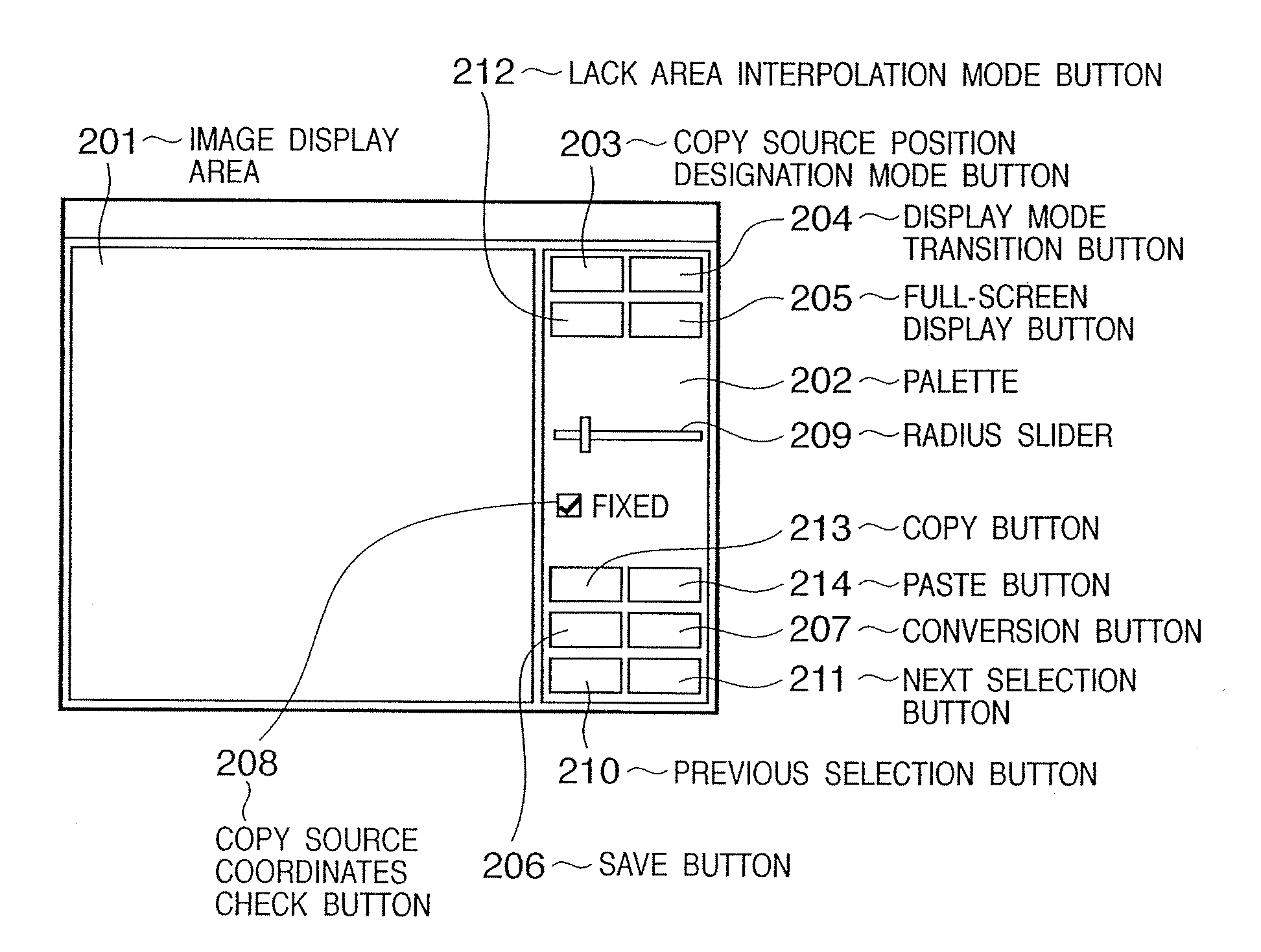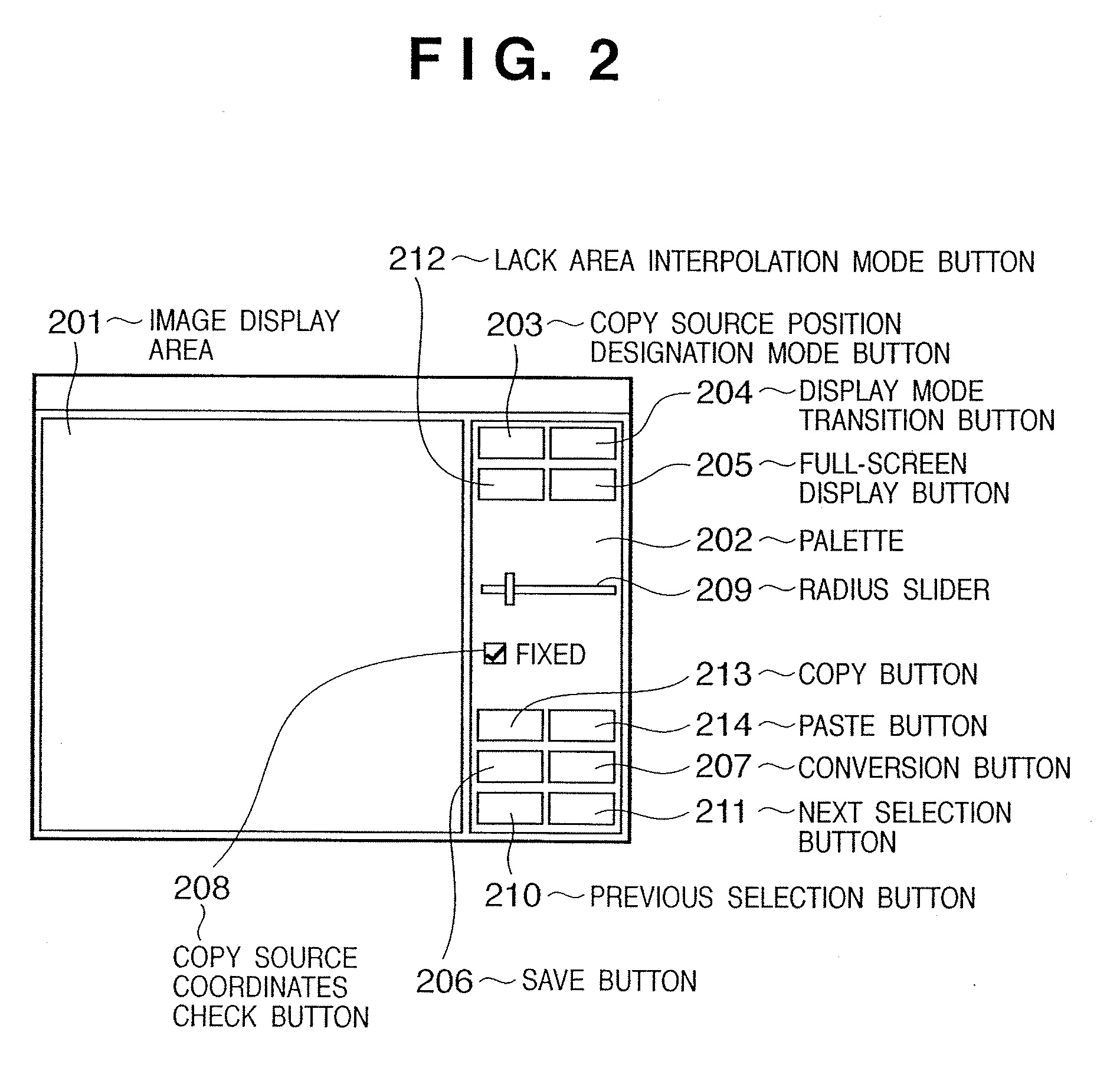Image editing apparatus and control method for the same, computer program, storage media
a technology of image editing and control method, which is applied in the direction of instruments, computing, electric digital data processing, etc., can solve the problems of image capture sections, exposed to the outside atmosphere, and become an issu
- Summary
- Abstract
- Description
- Claims
- Application Information
AI Technical Summary
Benefits of technology
Problems solved by technology
Method used
Image
Examples
first embodiment
[0117] In the above-described embodiment which forms the basis of the present invention, a case was explained in which the display mode was switched back to the fit mode 401 (for instance, step S807 in FIG. 8) when either a file was designated by an application or when an image to be edited 300 was changed using the previous selection button 210 or the like. Alternatively, in the present first embodiment, an appropriate area is displayed without switching display modes.
[0118] In addition, in the above-described embodiment, a GUI used for performing dust reduction processing when dust attached to a sensor is incorporated into image data has been described. Although there are cases where dust on the sensor moves slightly due to impact caused by the shutter and the like, it is well-known that there is a high probability that the dust will be incorporated in the same position through consecutively shot image data.
[0119] In consideration of the above, for the present embodiment, displa...
second embodiment
[0128] In the present embodiment, a method will be described in which dust reduction processing is performed in a more efficient manner by adding a display position assist function to the first embodiment. In addition to the configuration of the first embodiment, the present embodiment comprises a display coordinates table, a display coordinates table update flag, and a display position ID. A display position ID is information corresponding to a sequence in which image processing has been performed.
[0129] A display coordinates table is shown in FIG. 14. To begin with, a display coordinates table 1400 includes an image rotation direction 1401 of the image to be edited 300. The display coordinates table 1400 stores a double-precision floating-point number display coordinates array 1403 in which a coordinates array retrieved from the processing information stack 304 of the image to be edited 300 is normalized to [0.0, 1.0] using the width and height of the image to be edited 300, and ...
third embodiment
[0144] In the present embodiment, a description will be provided on the expansion of the display position assist function described in the second embodiment. Image editing apparatuses corresponding to the aforementioned first and second embodiments are configured to display areas outside of an image during same size mode. However, there are many applications which do not display outside-of-image areas even in same size mode when the size of the image to be edited is greater than the display area size. In such cases, as shown in FIG. 20, display positions are controlled so that no outside-of-image areas exist.
[0145]FIG. 20 is a diagram showing an outline of display position compensation processing. In FIG. 20, reference numeral 300 denotes an image to be edited. Reference numeral 2001 denotes coordinates designated as the center of the display area within the image to be edited 300. The display area designated based on the coordinates 2001 will resemble the area shown as reference n...
PUM
 Login to View More
Login to View More Abstract
Description
Claims
Application Information
 Login to View More
Login to View More - R&D
- Intellectual Property
- Life Sciences
- Materials
- Tech Scout
- Unparalleled Data Quality
- Higher Quality Content
- 60% Fewer Hallucinations
Browse by: Latest US Patents, China's latest patents, Technical Efficacy Thesaurus, Application Domain, Technology Topic, Popular Technical Reports.
© 2025 PatSnap. All rights reserved.Legal|Privacy policy|Modern Slavery Act Transparency Statement|Sitemap|About US| Contact US: help@patsnap.com



